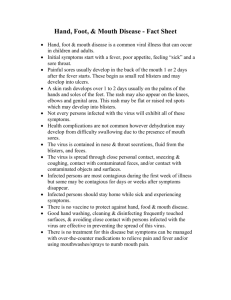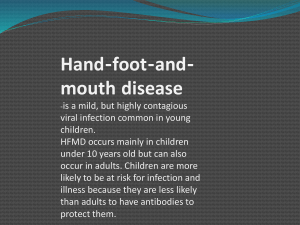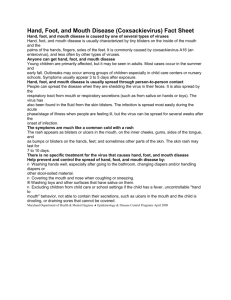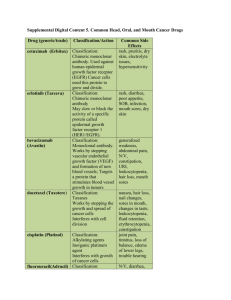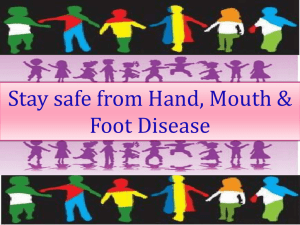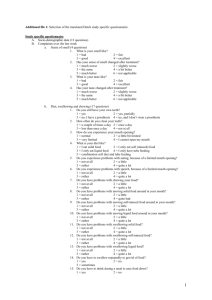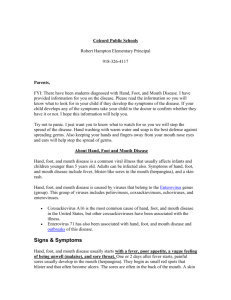Important Information About Hand Foot and Mouth Disease in
advertisement
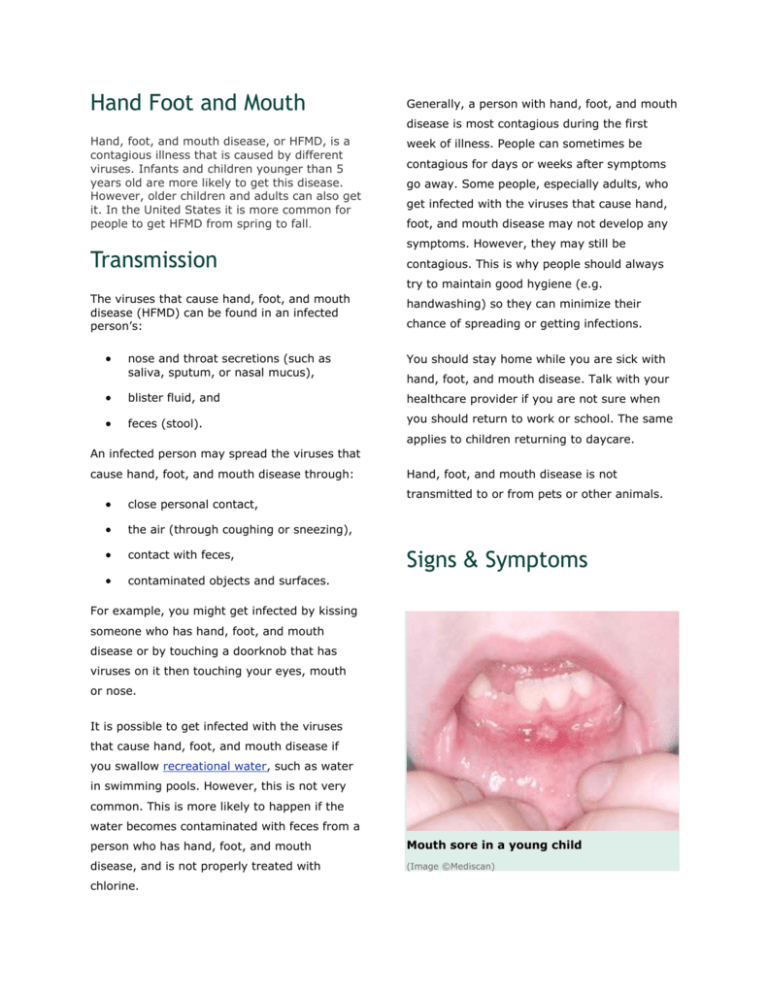
Hand Foot and Mouth Generally, a person with hand, foot, and mouth disease is most contagious during the first Hand, foot, and mouth disease, or HFMD, is a contagious illness that is caused by different viruses. Infants and children younger than 5 years old are more likely to get this disease. However, older children and adults can also get it. In the United States it is more common for people to get HFMD from spring to fall. Transmission week of illness. People can sometimes be contagious for days or weeks after symptoms go away. Some people, especially adults, who get infected with the viruses that cause hand, foot, and mouth disease may not develop any symptoms. However, they may still be contagious. This is why people should always try to maintain good hygiene (e.g. The viruses that cause hand, foot, and mouth disease (HFMD) can be found in an infected person’s: handwashing) so they can minimize their chance of spreading or getting infections. nose and throat secretions (such as saliva, sputum, or nasal mucus), You should stay home while you are sick with blister fluid, and healthcare provider if you are not sure when feces (stool). you should return to work or school. The same hand, foot, and mouth disease. Talk with your applies to children returning to daycare. An infected person may spread the viruses that cause hand, foot, and mouth disease through: close personal contact, the air (through coughing or sneezing), contact with feces, contaminated objects and surfaces. Hand, foot, and mouth disease is not transmitted to or from pets or other animals. Signs & Symptoms For example, you might get infected by kissing someone who has hand, foot, and mouth disease or by touching a doorknob that has viruses on it then touching your eyes, mouth or nose. It is possible to get infected with the viruses that cause hand, foot, and mouth disease if you swallow recreational water, such as water in swimming pools. However, this is not very common. This is more likely to happen if the water becomes contaminated with feces from a person who has hand, foot, and mouth Mouth sore in a young child disease, and is not properly treated with (Image ©Mediscan) chlorine. Hand, foot, and mouth disease usually starts with a fever, poor appetite, a vague feeling of being unwell (malaise), and sore throat. One or 2 days after fever starts, painful sores usually develop in the mouth (herpangina). They begin as small red spots that blister and that often become ulcers. The sores are often in the back of the mouth. A skin rash develops over 1 to 2 days. The rash has flat or raised red spots, sometimes with blisters. The rash is usually on the palms of the hands and soles of the feet; it may also appear on the knees, elbows, buttocks or genital area. Some people, especially young children, may get dehydrated if they are not able to swallow enough liquids because of painful mouth sores. Persons infected with the viruses that cause hand, foot, and mouth disease may not get all the symptoms of the disease. They may only get mouth sores or skin rash.
